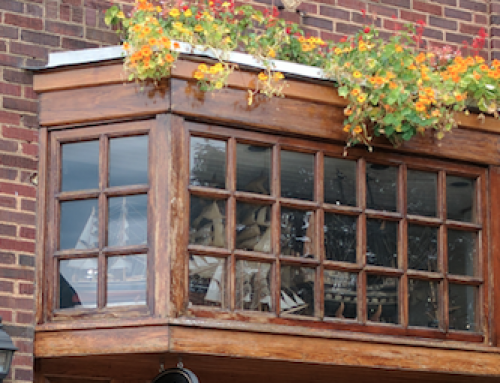Discover Myosotis: A Guide to Forget-Me-Not Flowers
Myosotis, or forget-me-not flowers, are tiny blue blooms that make a big impact. These charming plants win hearts with their delicate beauty and easy-going nature. Gardeners everywhere love these small but mighty flowers.
Forget-me-nots catch the eye with bright blue petals and sunny yellow centers. They add a splash of color to any garden or outdoor area. These versatile flowers suit both new and experienced gardeners.
Let's dive into the world of Myosotis and their growing popularity. We'll show you how to help these blue beauties thrive in your garden. Get ready to become a forget-me-not fan!
Understanding Myosotis: The Botanical Beauty Behind Forget-Me-Nots
Myosotis, or forget-me-nots, are part of the Boraginaceae family. These wildflowers enchant gardeners with their delicate charm. Let's dive into the world of these captivating perennials.
Origins and Natural Habitat
Forget-me-nots flourish in damp, cool settings. They originated in Europe and Asia but now grow globally. These hardy plants thrive in meadows, forests, and near water sources.
Their adaptability allows them to prosper in various climates. You'll find these resilient wildflowers in diverse environments worldwide.
Species Diversity in the Boraginaceae Family
The Boraginaceae family includes over 50 Myosotis species. Some well-known types are:
- Myosotis sylvatica (woodland forget-me-not)
- Myosotis alpestris (Alpine forget-me-not)
- Myosotis scorpioides (water forget-me-not)
Each species has unique traits, from flower hues to growth patterns. This variety makes forget-me-nots suitable for different garden styles.
Morphological Characteristics
Forget-me-nots have distinct features that make them easy to spot. Their tiny, five-petaled blooms usually come in blue shades. However, pink and white varieties also exist.
These plants form low-growing clusters with fuzzy, oval leaves. Their compact size and abundant flowers make them ideal for ground cover or borders.
The Rich History and Symbolism of Forget-Me-Not Flowers
Forget-me-nots, or Myosotis, hold deep cultural meaning. These tiny blue flowers have charmed people for centuries. Their name sparks thoughts of remembrance and longing.
Medieval knights wore forget-me-nots to show loyalty to their ladies. This tradition grew into a symbol of romance. Art and literature often use Myosotis to represent true love.
Different cultures attach varied meanings to forget-me-nots:
- In Victorian England, they symbolized true love and memories
- German folklore links them to God's creation of earth's colors
- Newfoundland uses the forget-me-not as a memorial day flower
Myosotis plays a big role in many traditions. Brides add them to bouquets for luck. Gardeners plant them to honor lost loved ones.
These small flowers have a huge impact on emotions. Their image appears on jewelry and tattoos. People give forget-me-nots to show lasting affection.
The forget-me-not's legacy shows that small things can leave big impressions. These tiny blooms continue to inspire and touch hearts worldwide.
Growing Conditions for Thriving Forget-Me-Nots
Forget-me-nots flourish in specific settings, perfect for woodland gardens and spring blooms. These dainty flowers need the right environment to create a stunning garden display.
Soil Requirements and Preparation
These flowers prefer rich, moist soil with good drainage. Mix organic matter into your garden bed to boost soil quality. Aim for a pH level between 6.0 and 7.0 for best results.
Light and Temperature Preferences
Spring blooms thrive in partial shade, making them great for woodland gardens. They can handle full sun in cooler areas. Forget-me-nots do well in temperatures between 50°F and 70°F.
Watering and Humidity Needs
Keep the soil moist but not soggy. Water deeply once or twice weekly, depending on rainfall. These plants enjoy humid conditions, so mist them occasionally in dry climates.
- Water deeply to encourage strong root growth
- Mulch around plants to retain moisture
- Avoid overhead watering to prevent fungal diseases
Give your forget-me-nots these ideal conditions, and they'll thrive. Come spring, you'll enjoy a beautiful carpet of blue flowers in your garden.
Planting and Propagation Techniques
Forget-me-nots are charming perennial wildflowers that add beauty to any garden. These delightful plants offer several ways to grow and expand your collection.
Seed Starting Methods
Plant forget-me-not seeds directly in your garden during spring or fall. Scatter them on prepared soil and press lightly. Keep the area moist until seeds sprout in 8-14 days.
Division and Transplanting
Divide forget-me-not plants every 2-3 years to keep them healthy. Dig up the whole plant and separate it into smaller parts. Replant these sections in early spring or fall when it's cooler.
Timing Your Plantings
Plan your forget-me-not plantings wisely:
- Spring: Sow seeds or transplant seedlings after the last frost
- Summer: Avoid planting during hot months
- Fall: Plant seeds or divisions 6-8 weeks before the first frost
These methods will help you grow a beautiful display of forget-me-nots every year. These flowers spread easily, so you might see them in surprising spots around your garden!
Incorporating Forget-Me-Nots in Garden Design
Forget-me-nots add whimsy to gardens. They excel as groundcover, creating a sea of color. In cottage gardens, they build a soft, romantic feel.
Plant forget-me-nots under rose bushes for a classic look. They thrive with ferns and hostas in woodland gardens. Their self-seeding nature suits naturalized areas well.
Consider these design ideas:
- Edge pathways with forget-me-nots for a charming border
- Create a blue river effect by planting them in drifts
- Mix with spring bulbs for a colorful early-season display
Alpine forget-me-nots shine in rock gardens. They nestle into crevices, adding blue to stone surfaces. In containers, pair them with trailing plants for a cascading effect.
These flowers work well in cut arrangements too. They're ideal fillers, adding texture to bouquets. Forget-me-nots bring charm to any garden setting.
Seasonal Care and Maintenance Tips
Forget-me-nots are charming perennials that bloom beautifully in spring. These delightful flowers need proper care throughout the year to thrive. Let's explore how to keep them healthy in different seasons.
Spring Growth Management
Forget-me-nots burst into life in spring. Remove dead leaves and stems to encourage healthy growth. Apply a balanced fertilizer to boost soil nutrients.
This care promotes lush foliage and abundant spring blooms. Your garden will thank you with a stunning display of flowers.
Summer Care Essentials
Summer care focuses on watering and pest control. Keep the soil moist, especially during dry spells. Watch for pests like aphids and remove them manually.
You can also use organic insecticidal soap for pest control. Deadhead spent blooms to encourage continuous flowering throughout the season.
Fall Preparation and Winter Protection
Prepare your forget-me-nots for winter in fall. Cut back foliage to about 2 inches above ground level. Apply mulch around the plants to protect roots from freezing.
In colder regions, cover the area with burlap or evergreen branches. This extra insulation helps your plants survive harsh winter conditions.
Following these seasonal care tips ensures healthy forget-me-nots. Your plants will be ready to delight you with charming spring blooms year after year.
Common Varieties and Their Unique Features
Forget-me-nots, or Myosotis, come in various types. Each variety has unique traits for different garden settings. Let's explore some popular forget-me-not varieties.
Alpine Forget-Me-Nots
Alpine forget-me-nots are compact wildflowers ideal for rock gardens. They produce vibrant blue blooms and thrive in cool, mountainous areas. Their small size suits tight spaces or container gardens.
Water Forget-Me-Nots
Water forget-me-nots love wet environments. These aquatic plants show light blue flowers near ponds or streams. They spread quickly in moist soil and add color to water features.
Garden Forget-Me-Nots
Garden forget-me-nots are the most common Myosotis variety. These adaptable plants thrive in various garden conditions. They form clusters of small, five-petaled flowers in blue, pink, or white.
Garden forget-me-nots self-seed easily. This creates beautiful carpets of color each spring in your garden.
Some popular garden forget-me-not cultivars include:
- Myosotis sylvatica 'Victoria Blue': Known for its intense blue flowers
- Myosotis alpestris 'Indigo Blue': Offers deep indigo blooms
- Myosotis sylvatica 'Snowsylva': Produces pure white flowers
Knowing these Myosotis varieties helps you pick the right forget-me-not. Alpine, aquatic, or garden types all add charm to your landscape.
Companion Planting and Garden Combinations
Forget-me-nots create a dreamy blue carpet in woodland gardens. They pair well with ferns, hostas, and woodland phlox. In shady areas, they add color to the forest floor.
These delicate flowers blend with other spring bloomers in cottage gardens https://rooomly.pl/. They look great next to tulips, daffodils, and pansies. Plant them near paths for a whimsical touch.
Forget-me-nots work in various color schemes. In woodland gardens, pair them with white astilbe or pink bleeding hearts. For cottage gardens, mix them with sunny yellows and warm pinks.
These flowers adapt well to different garden styles. They enhance the beauty of outdoor spaces. Forget-me-nots are versatile and can fit many garden designs.
Consider their spreading habit when adding forget-me-nots to gardens. They make najbliższa niedziela handlowa great ground cover where other plants struggle. Use them to fill gaps between perennials or soften hardscaping edges.
Forget-me-nots add romance and nostalgia to any garden. They work well in both woodland and cottage settings. Their charm can transform any outdoor space.





Leave A Comment